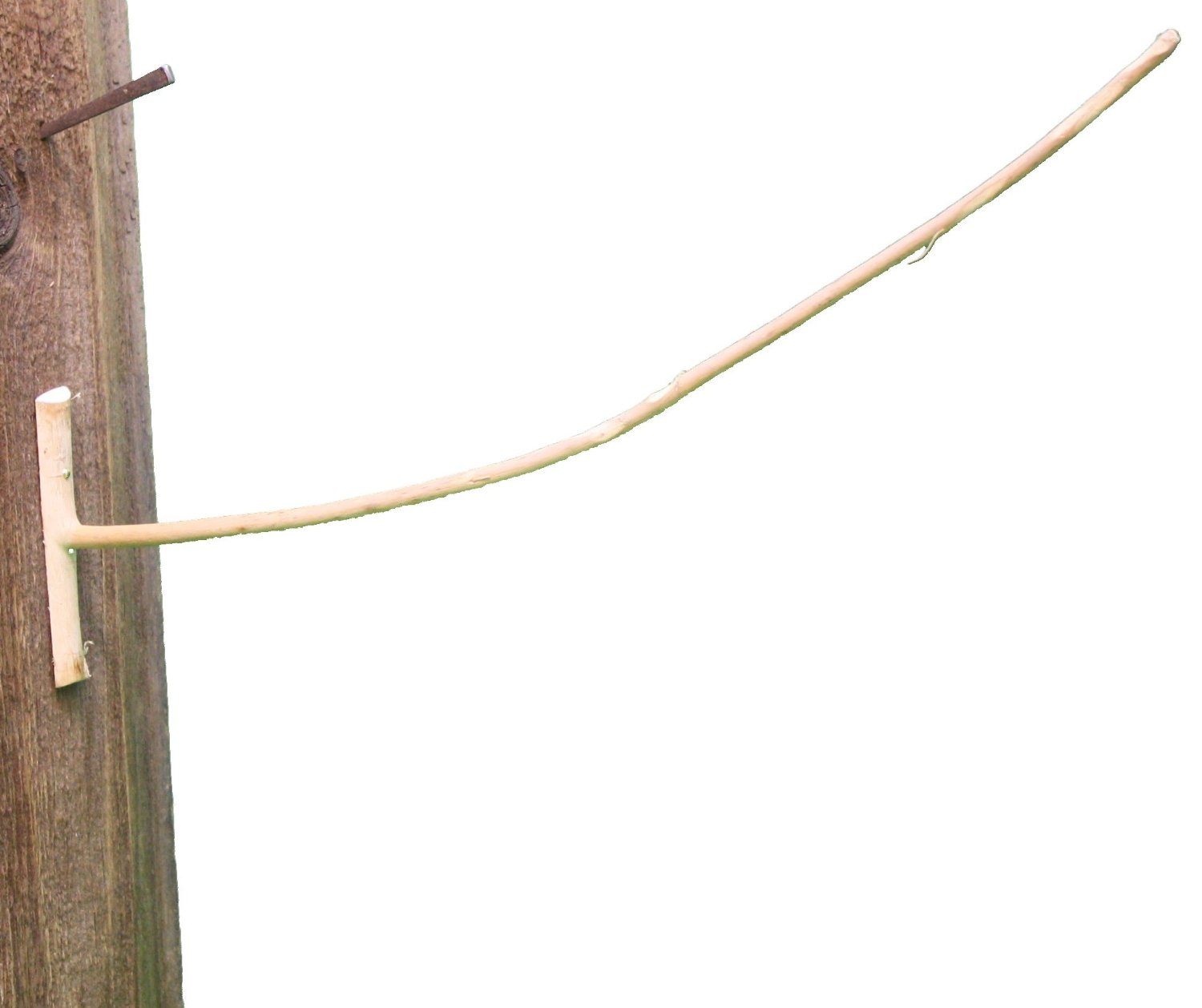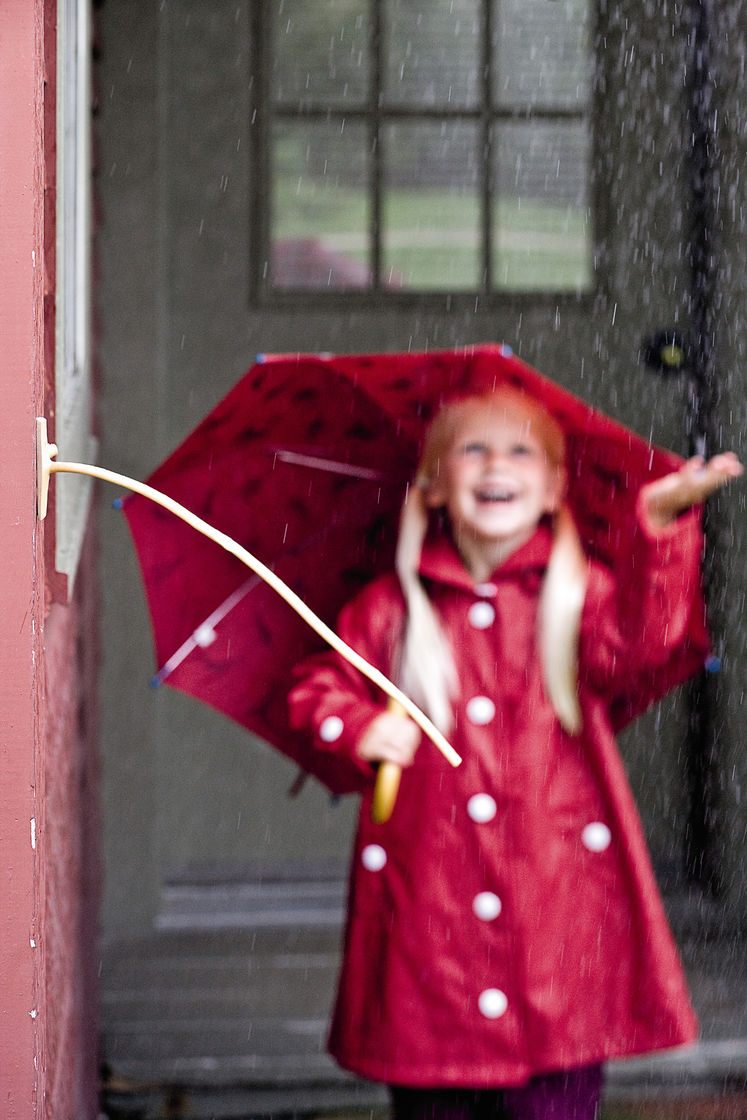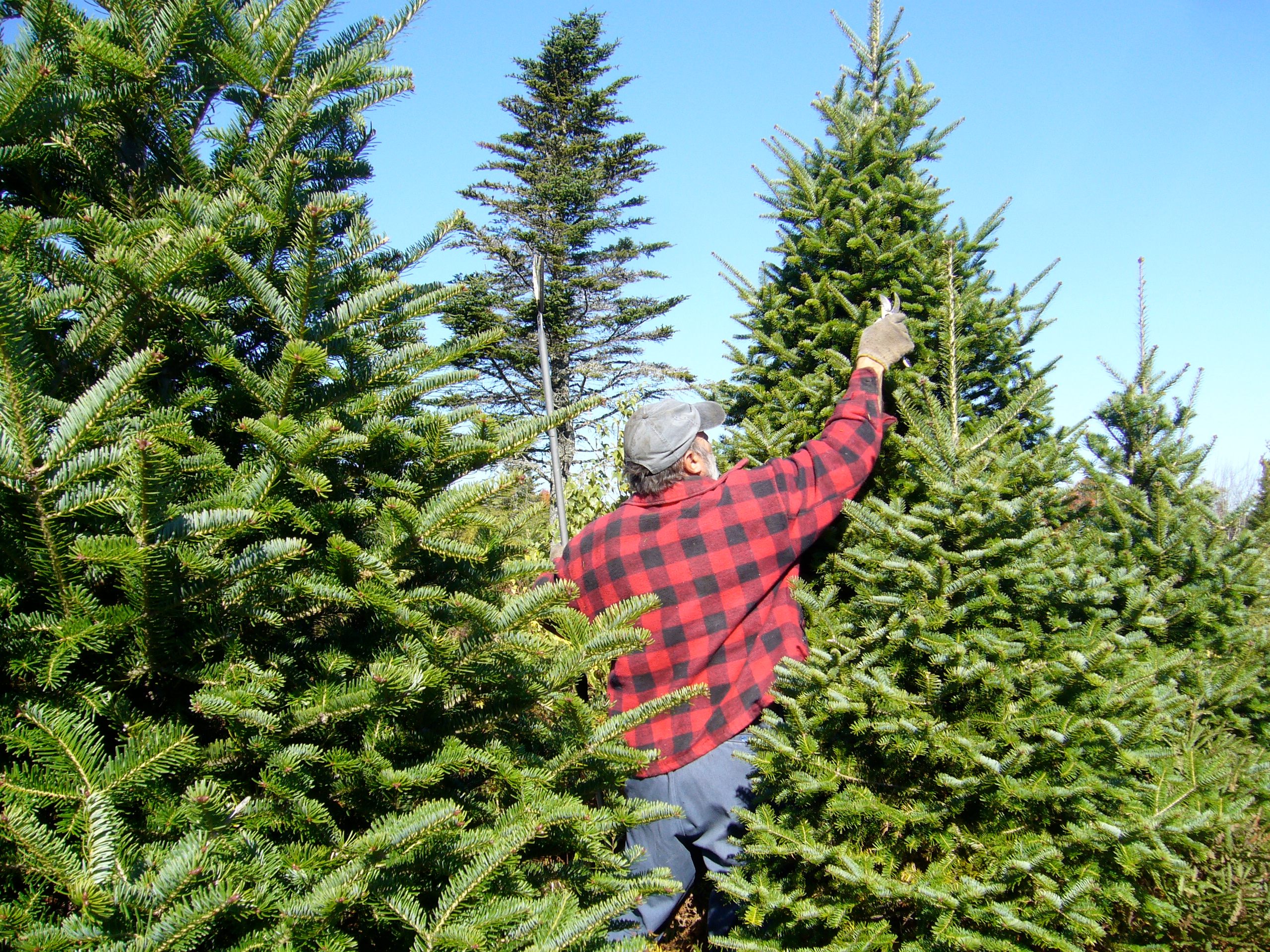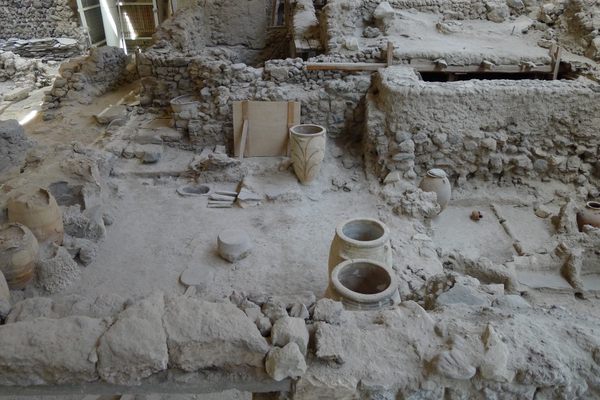Who Needs a Weather App When You Can Get This Weather Stick?
Swap your Apple phone for an actual branch.

If the stick is deflecting upwards, the weather ought to be good. (Photo: Courtesy of Davis Hill)
A thin twig that can predict the weather. Seems unlikely. But that’s exactly the shtick behind the weather stick, a natural barometer of sorts that you can nail to the side of your house, garage, or teepee.
Around 16 inches long, the spindly stick will smile upwards in anticipation of good weather (clear skies and sun), and deflect downwards before rain or snow. No batteries required—and yes! “They Really Work”.
But how, exactly? Not just any stick, it turns out, can serve as a weather stick. In fact, there’s only one type of wood that fits the bill: balsam fir, which can be found in the northeastern reaches of the U.S. and Canada. That’s why you’ll come across Vermont Weather Sticks, the Maine Woodsman’s Weather Stick, and the Canadian Weatherstick, but aren’t likely to find an Arizona or Hawaii Weather Stick anytime soon. That said, though balsam firs only grow in certain regions, weather sticks can be employed anywhere. They just might take longer to acclimate to the ambient humidity in other regions, according to a representative at the Davis Hill weatherstick company.

The Vermont Weather Stick accurately confirms that it’s raining. (Photo: Courtesy of Gardener’s Supply Company)
Sellers of the stick don’t seem to really understand the science behind it. Davis Hill, which has been selling the sticks for over 30 years, says that the wood interacts with the moisture in the air, and when the air pressure is high (meaning sunny skies), the stick will point up. When pressure drops and humidity is high—signaling rain—the stick points down. Stick sellers believe this is because balsam firs grow in a snow-heavy region, so their branches turn downward to shed extra weight, and upward to channel any extra moisture.
But that argument is iffy, since all types of different trees in cold regions deal with the same snowy conditions, yet only the balsam fir can be whittled into weather sticks. Instead, what might help explain the mysterious weather instrument is something known as “reaction wood.” According to the Farmers’ Almanac, reaction wood—basically, strengthened wood fibers—forms when a tree regularly braces itself against high winds or pressure coming from the same direction. But as you might surmise, reaction wood develops in most types of trees, depending on their environment.
With balsam firs, things are a tad different. Balsams develop stronger fibers on the undersides of their branches that shrink in dry weather in order to conserve water. When the weather is wet, the fibers, and thus branches, expand and bend upwards. This means that on the actual balsam tree, a twig pointing down would mean the weather is sunny and dry, while a twig pointing up would mean it’s humid and wet. Indeed, if you make your own weather stick, you need to remember to mount it flipped from how you snipped it off the tree (at least if you want to stick with society’s up: good/down: bad conventions).
According to Michigan outdoor publication Woods-N-Water News, this reaction wood theory is supposedly uprooted by the fact that a weather stick can be hewed from a balsam sapling, which hasn’t yet been properly exposed to the elements. However, this is based on the assumption that a balsam’s reaction wood develops over time through cell compression rather than being an inherent trait.

Weather sticks can only be hewn from the balsam fir. (Photo: Madereugeneandrew/CC-BY-SA-3.0)
Whatever the case, one wonders how anyone first discovered the balsam’s handy barometrical properties in the first place. Based on claims scattered across weather stick websites, it was the Abenaki Indians, a tribe native to the North American northeast. As advertised by one online seller: “Now you can predict the weather just like the Native Americans using the all natural “Made In Maine” Woodsman WeatherStick®”. (Interestingly, you won’t find any retailers selling “Abenaki Weather Sticks,” and none are able to confirm the historical link. And perhaps there is no link—Maine Line Products does describe itself as “Home of the Weatherstick.”)

(Photo: Courtesy of Gardener’s Supply Company)
Holly Clement works at the Adirondack Store, which has been selling weather sticks for over 10 years, and even has one out on the front of their building. Clement says that the sticks definitely work: “They do what they say: react to the humidity.” However, it’s more indicative of what’s happening outside, she says, than it is predictive—a fun confirmation of weather conditions. (If that’s the case, then online customer reviews claiming it to be “amazingly accurate” are pretty easy to believe.) Clement says the sticks sell very well all year round, and people will come back if their current one happens to break. (Did we mention that they are biodegradable?)
But no matter if or how it works, the weather stick can guarantee two things for sure: curious guests and lively discussion. As described by Evergreen Farm, which sells the Balsam Barometer Weather Stick, it’s “A REAL CONVERSATION PIECE.”
And when you think about it, isn’t that what the weather is really all about?
Object of Intrigue is a weekly column in which we investigate the story behind a curious item. Is there an object you want to see covered? Email ella@atlasobscura.com





















Follow us on Twitter to get the latest on the world's hidden wonders.
Like us on Facebook to get the latest on the world's hidden wonders.
Follow us on Twitter Like us on Facebook